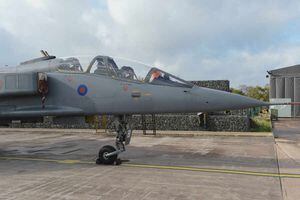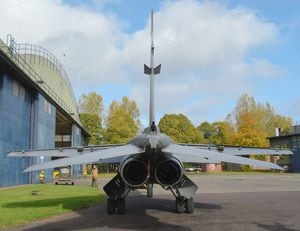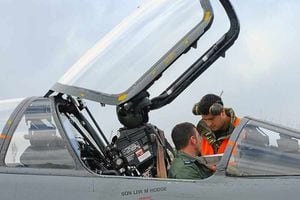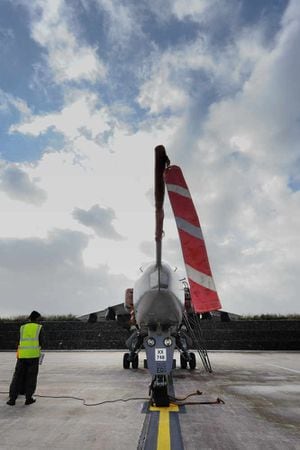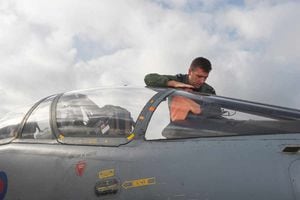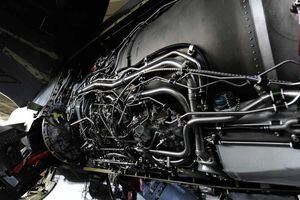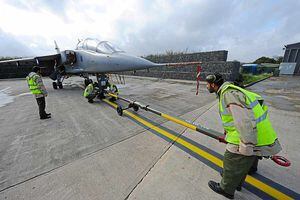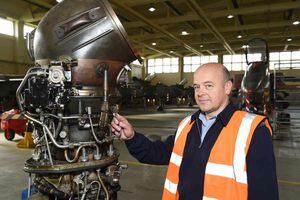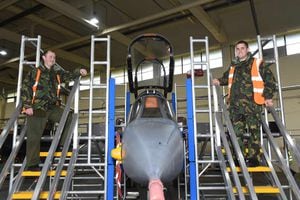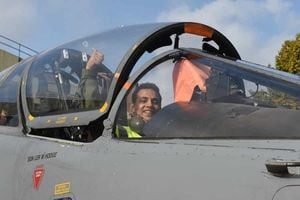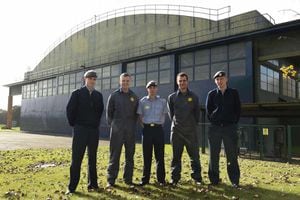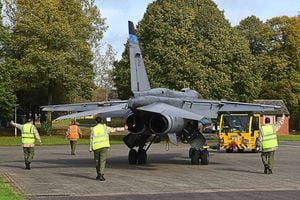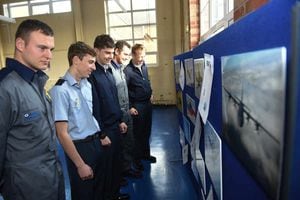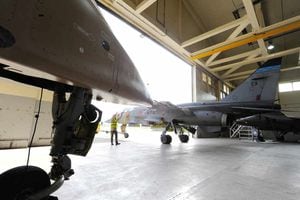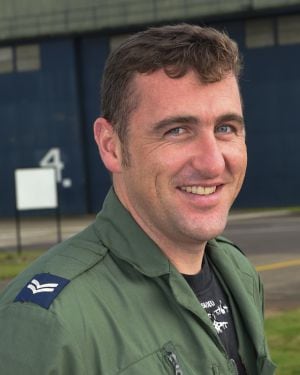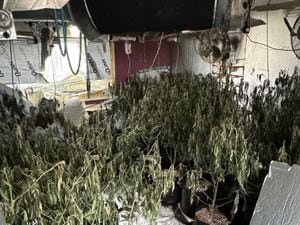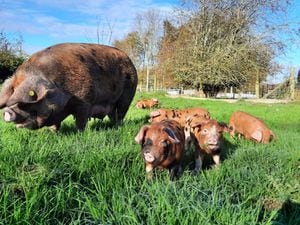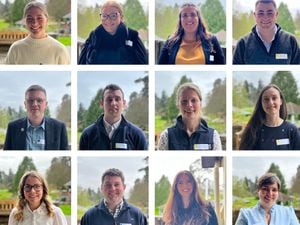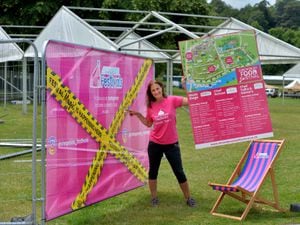Apprentices learning the ropes with fighter jets at RAF Cosford
It's one of the few fighter jets worked on by the Royal Air Force's engineers of tomorrow – and it's being used right here in Shropshire.
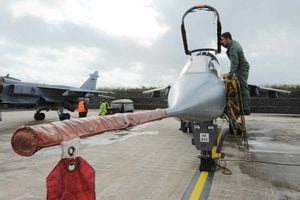
Apprentices from across Britain are being sent to RAF Cosford to work on Jaguar fighter jets before being deployed on missions across the world. The idea is that trainees receive live training which gives them a better idea of what working on the front line would be like.
The Shropshire airbase is the only place in the country where the decommissioned planes are being used in such a hands-on fashion. Youngsters from the age of 16 are eligible to apply for an engineering apprenticeship.
All of the air force's engineering apprentices learn their skills and all the safety aspects that come with handling such a technical and potentially dangerous piece of equipment.
The Jaguars arrived at Cosford about a year ago and among the trainees' tasks are checking flight systems and being aware of the dangers of a moving a jet on an airfield.
Warrant Officer Andy Bisset, who oversees the training scheme, said: "The apprentices could leave school at 17 and within a few months they could be working on Typhoons on the frontline, or helping to move Ebola patients in Africa."
Cosford is the only base in the country to offer such a hands-on experience. The apprentices, who eventually go off to work on planes all over the world, now have to first train at the Shropshire airbase to learn their skills and all the safety aspects that come with such handling such a technical and potentially dangerous piece of equipment.
Warrant Officer Andy Bisset, who oversees the entire training scheme, has been with the RAF for more than 35 years,He now helps train the next generation of engineers who help to keep the British air force mobile, as well as training students from overseas.
"Anyone aged 16 to 30 can join the RAF as an apprentice engineer," he said. "Some start from school and have never flown in a plane before, so there can be a massive difference in their experience.
"We got the Jags about 12 months ago and before that the trainees would work on Jet Provosts but they were not live aircraft.
"Before a plane can take off they have to be signed off by one of these engineers. They make sure the flight systems are all sorted and there is nothing wrong with the plane.
"The apprentices could leave school at 17 and within a few months they could be working on Typhoons on the frontline, or helping to move Ebola patients in Africa.
"Within a few weeks they could be posted to Iraq or Afghanistan."
The training prepares the apprentices for the noise and smell of an aircraft, and to watch out for the dangers of a moving jet in an airfield.
During training the instructors will follow all the signals given out by the apprentices, even if they are wrong, just to prove a point.
They will turn the wrong way, so long as it's not dangerous, if directed to, which is all designed to make the apprentices think and to give then a confidence boast when they get it right.
It is vitally important, too, because once the engineers have been posted they will carry out the checks and look for any signs of damage on jet, which could soon be back up in the air if they give the okay.
A check of a Jag can take 40 minutes but something the size of a Boeing C-17 can take three-and-a-half hours.
For most things that seem out of place the apprentices will call in a specialist, but they can carry out small repairs on their own – and if they think the plane looks fine, they will sign it off.
It is a decision that could be the difference between a crash or ultimately a pilot losing his or her life.
"Once they've finished they could be posted to a squadron anyway in the country, although they can give their preferences," said Mr Bisset.
"They can then start progressing through the ranks if they wish. All the other air forces in the country are now trained by us here at Cosford."
"The students have been here for about 12 weeks so far, so they have about six weeks training left.
"We get international students being sent here to train because we are the best in the world.
"The students come from places like Kuwait and Saudi Arabia, where we also sell a lot of our equipment to.
"They do really well with the language barriers and the countries don't just send everyone over, it's their best students."
The jets, when in service, are worth about £6 million apiece – and they still cost a lot of money to run, along with fuel costs and expenditure.
But after the RAF carried out cost analysis exercises they realised sending out students without live training, who were suddenly placed in a real war zone, would have to come back for more training soon after, sometimes an extra six months, so it was agreed to the live training was money well spent.
Mr Bisset said: "With the live training they know straight away there are hazards involved, you can get run over, but there are a lot of supervisors here to make sure it doesn't happen.
"They do a lot of classroom work here too and practice without the aircraft.
"They learn how to perform engine changes, break changes, as well as the paperwork and safety sides of things.
"The engines for a Jag can weight three-quarters of a tonne so we try to teach the apprentices to be quick and safe all the time.
"We don't want them to start rushing in any situation because the mistakes can happen.
"The engines can be running for two hours flat, stopping and starting all the time, which is completely different to the real world where they can fly for three to four hours but will then stop."
The base is also the only place in the country where the instructors are trained to "taxi" the planes about, which means actually climbing in the cockpits and driving them.
But a lot of the systems on the planes have been disabled, such as the extra fuel tankers that give the planes enough power to take off, and the ejector seats, which launch a person 150 metres in the air.
Corporal Chris Blackledge, an instructor at RAF Cosford who has served in the air force for 18 years, said:"I've worked on plane on the frontline and the training they get here make such a difference.
"When someone first works in a live environment it can be an eye opener.
"I'm currently training myself to taxi the planes, which means sitting in the cockpit and driving them, so everyone is learning at the same time.
"I've seen operational duty in Oman and I've been to places like Norway, Poland, Cyprus, all over the place.
"I always wanted to be an engineer and I thought about becoming a pilot but I think I'd prefer working on them rather than flying them."
Apprentice Joshua Marlow, 29, from Cornwall, is in his second stint with RAF.
After working in logistics he left for two years before returning to Cosford to learn engineering.
He recently found out he will be posted to RAF Brize Norton, to work on Hercules planes.
"I came back to learn a different trade. I wanted to learn something more technical," he said.
"Working on the live aircraft can give you a bit of a buzz. A lot of people can see the planes at air shows but we get to work on them close up.
"I'm really happy to be posted to Brize Norton too because that was my first choice."
Hadleigh Dee, 19, from Middlesborough, will be moving to RAF Coningsby to work on Typhoons.
"It's been really good here at Cosford and it's been everything I wanted," he said.
"I always wanted to be in RAF. I went to a museum once when I was about 11 and ever since then I've known this is what I've wanted to do."
